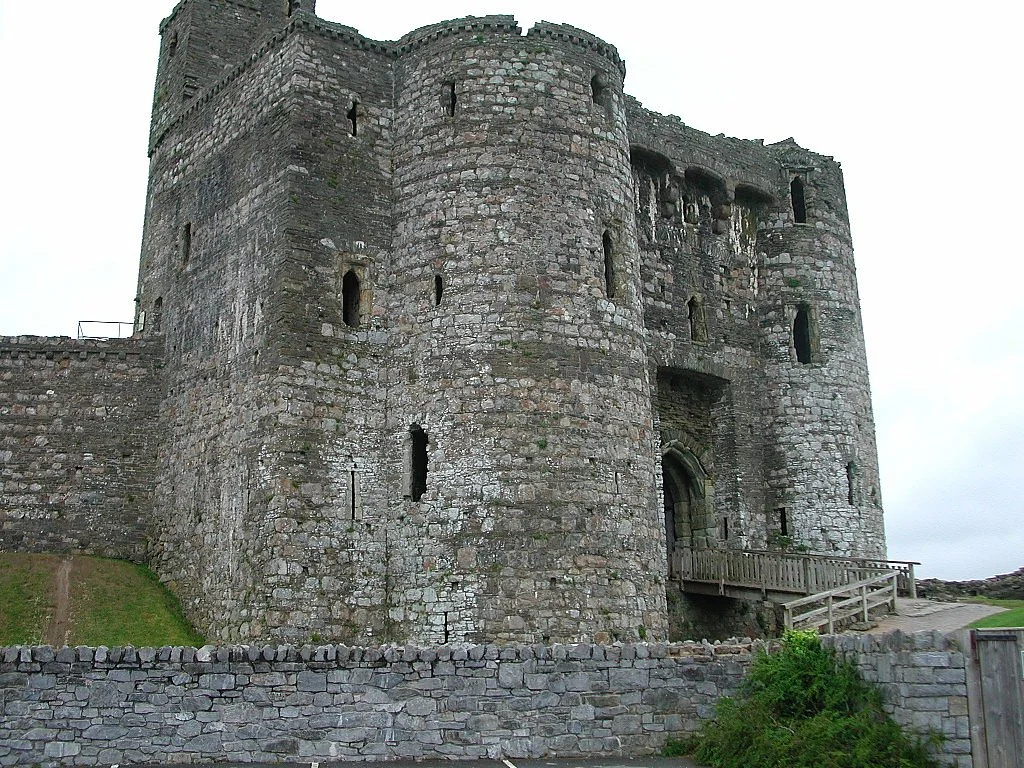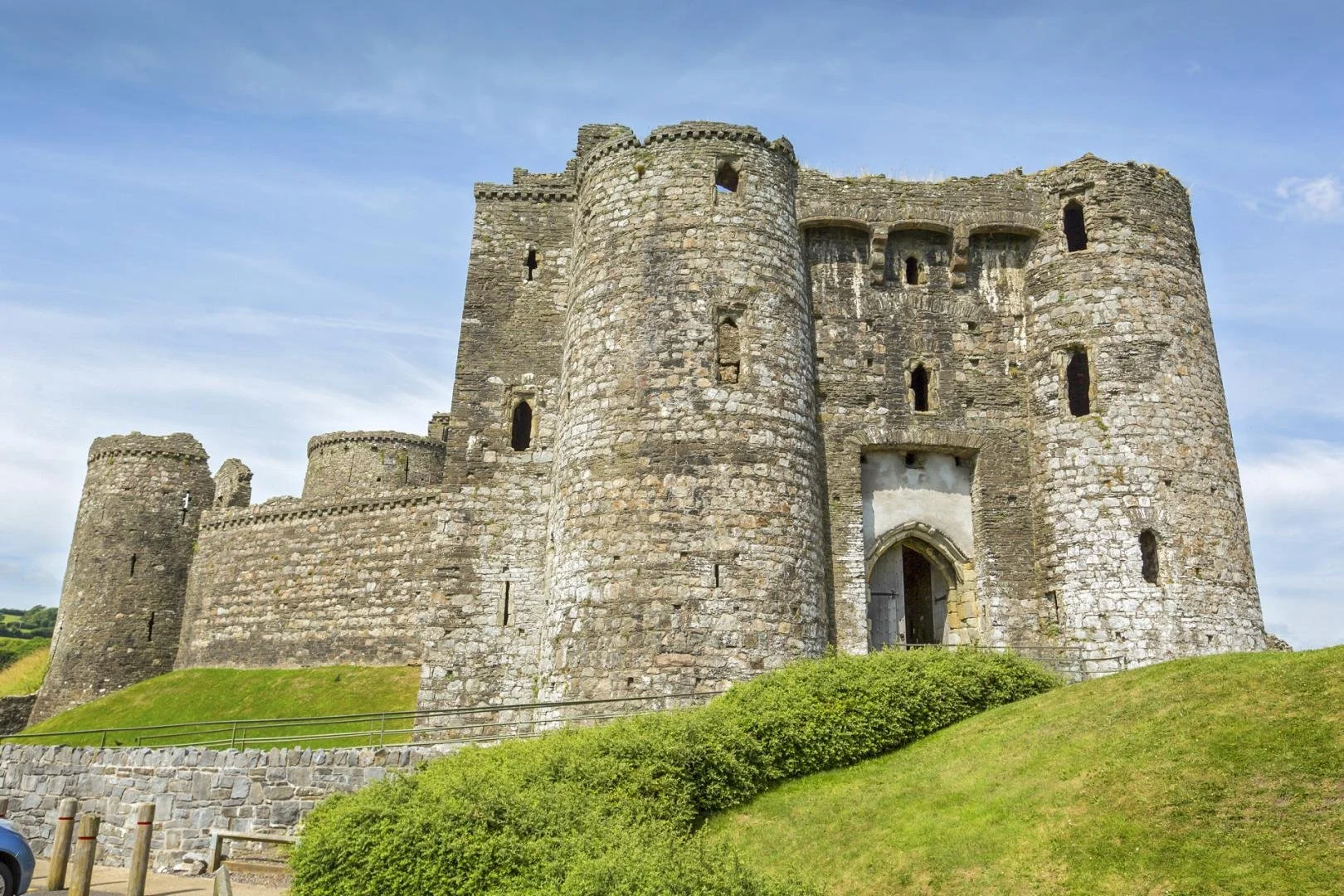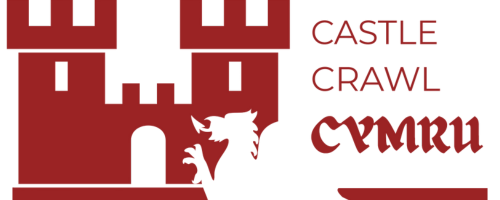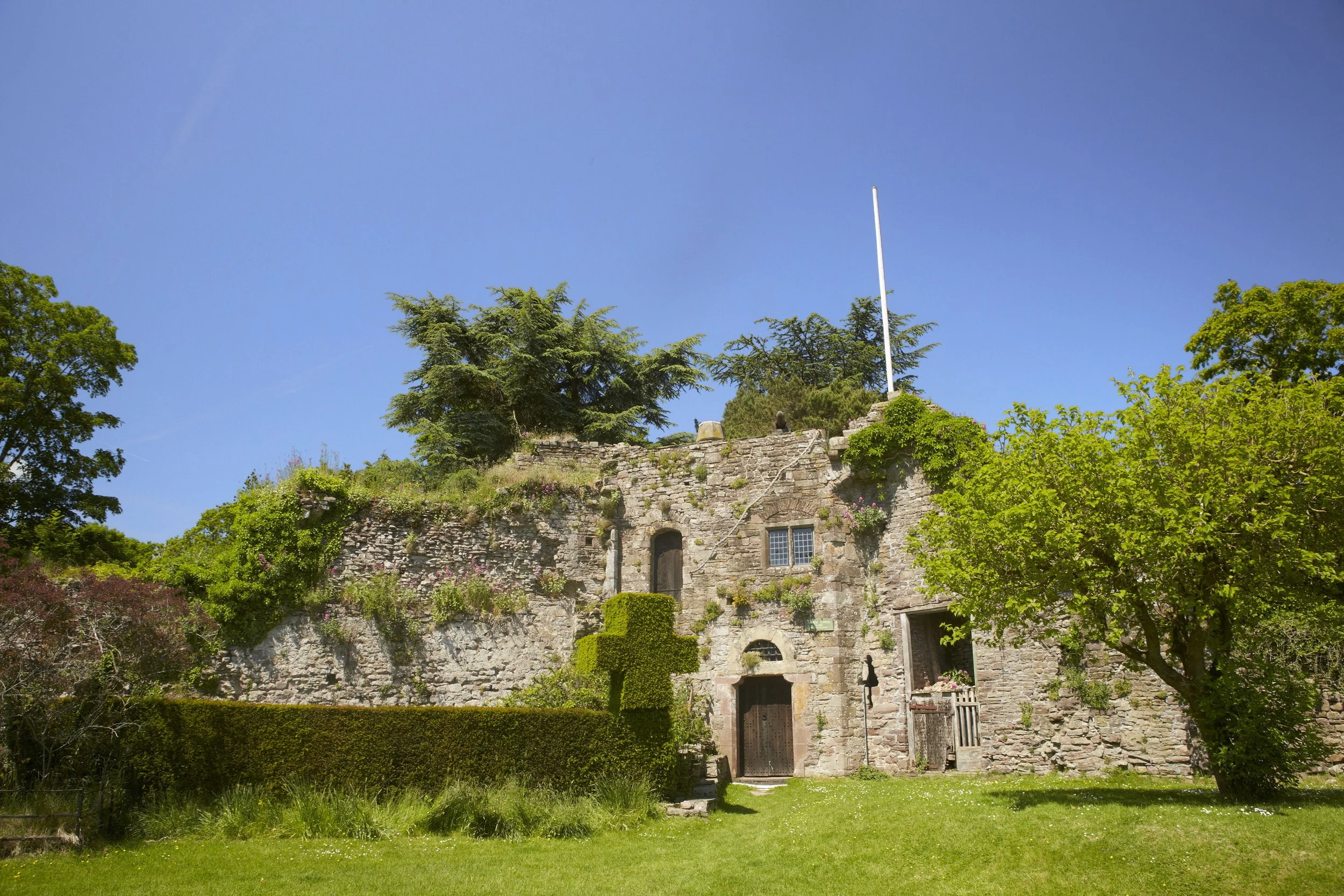Kidwelly Castle | Visit Amazing Welsh Castles
Kidwelly Castle is a Norman stone fortress in Carmarthenshire, South Wales. It stands above the River Gwendraeth and offers views of the surrounding countryside.
The castle was a key stronghold during the Norman conquest of south-west Wales and later became a fortified residence for Marcher lords.
Its preserved towers and gatehouses make it one of the best surviving examples of a Norman castle in Wales.
Quick Facts
Location: Kidwelly, Carmarthenshire, South Wales
Built: c. 1106 (initial timber structure), stone defences added in 13th century
Type: Norman concentric castle
Condition: Partially ruined but well preserved
Ownership: Cadw (Welsh Government’s historic environment service)
Access: Open to the public
Grid Reference: SN 408 067
Brief History
The castle was originally built around 1106 by the Norman lord Roger of Salisbury. Its initial structure was timber, like many early Norman castles. The site was chosen for its defensive advantage beside the River Gwendraeth.
The castle changed hands multiple times during the 12th and 13th centuries. In 1136, it was the site of a battle between Norman forces and the army of Gwenllian ferch Gruffydd, a Welsh princess who led a local uprising. She was captured and executed, but her attack left a lasting mark on the site’s history.
By the late 13th century, the de Chaworth family, and later the powerful John of Gaunt (Duke of Lancaster), rebuilt the castle in stone. Most of the surviving structure, including its gatehouse and towers, dates from this time. The castle became a key part of the defence network for English control in south-west Wales.
Although it remained in use until the 16th century, the castle gradually fell out of military importance. It was later preserved as a historic monument and is now managed by Cadw.
Features and Layout
The castle is a classic example of a concentric design, meaning it has multiple layers of defence. Its layout includes an inner ward, outer ward, and a powerful gatehouse flanked by tall drum towers.
The inner ward contains the remains of a chapel, great hall, and living quarters. These sections reveal the castle’s dual purpose as both a military site and a high-status residence. The outer ward provided extra protection and space for workshops and stables.
Visitors can climb the south-east tower for views over the town and estuary. A barbican—an outer defence before the main gate—added extra security. The deep moat, though now dry, once helped deter attackers.
Inside the towers, you can still see spiral staircases, arrow slits, and stone fireplaces. One notable detail is the wear on the steps, a sign of centuries of use.
Did You Know?
Gwenllian ferch Gruffydd led a Welsh army to attack Kidwelly Castle in 1136. She is one of the few known female military leaders in medieval Britain.
Images





Legends and Stories
One of the most well-known stories tied to the castle is that of Gwenllian ferch Gruffydd. According to historical accounts and local tradition, Gwenllian led an army to the castle in 1136 during an uprising against Norman control. She was captured during the battle and executed on the site. Her bravery became a symbol of Welsh resistance, and some visitors report that her presence is still felt around the grounds.
A common local tale, shared by tour guides and mentioned in visitor reviews on platforms like TripAdvisor, claims that Gwenllian’s ghost haunts the battlefield near the castle. She is said to appear on misty mornings as a figure in white armour, standing near the riverbank.
Another lesser-known story tells of secret tunnels supposedly connecting the castle to nearby buildings. Although no tunnels have been found, the rumour persists among local residents.
Sources:
Cadw summary of Gwenllian's role: https://cadw.gov.wales/visit/places-to-visit/kidwelly-castle
Visiting
The castle is open to the public and managed by Cadw. It offers access to most of its towers and walkways, with interpretation boards throughout the site.
Opening Times
1 April – 31 October: Daily, 9:30–17:00
1 November – 31 March: Monday–Saturday, 10:00–16:00; closed Sundays
Last admission 30 minutes before closing
(Always check the official site before visiting: https://cadw.gov.wales/visit/places-to-visit/kidwelly-castle)
Ticket Prices
Adults: £6.90
Under 18s: £4.80
Seniors (65+) / Students: £5.50
Family (2 adults + up to 3 children): £22.00
Cadw members: Free
Facilities
On-site parking
Small gift shop and visitor information area
Toilets available
No café on site, but local options nearby in Kidwelly town
Directions
Address: Castle Road, Kidwelly, Carmarthenshire, SA17 5BQ
Easily accessible by car via the A484
Nearest train station: Kidwelly (1 mile away)
Bus services from Llanelli and Carmarthen stop in town
Dog Policy
Dogs allowed on leads in the outer grounds only
Assistance dogs permitted throughout the site
Nearby Attractions
Kidwelly is located in Carmarthenshire, a region with several heritage and outdoor attractions within easy reach.
Kidwelly Industrial Museum
Housed in a former tinplate works, this free-entry museum explores the area’s industrial past.
Pembrey Country Park
Offers walking trails, beaches, cycling routes, and a dry ski slope. Ideal for families.
Parc y Bocs Farm Shop
A café and farm shop with a play area and small animal centre. Popular with younger visitors.
Laugharne Castle
Another Cadw-managed castle linked to poet Dylan Thomas. Set beside the Taf Estuary.
Visitor Tips
Arrive early to explore the towers before they get busy
Bring a camera—the views from the battlements are excellent
Wear sturdy footwear—some stone steps are uneven and worn
Free parking available just outside the entrance
Pick up a guidebook from the gift shop for historical background
Dogs allowed only in outer areas—plan accordingly if visiting with pets
Bring a raincoat—exposed areas offer little shelter in poor weather
Combine your visit with Kidwelly Industrial Museum for a half-day itinerary
FAQs
-
Most visitors spend around 1 to 1.5 hours exploring the site, including time to climb the towers and read interpretation panels.
-
Access is limited. The outer grounds are partly accessible on firm paths, but most towers and the inner ward have stairs and uneven surfaces.
-
Yes, you can bring a picnic. There are grassy areas outside the castle walls and some benches near the entrance.
-
Yes, but supervision is needed. The towers have narrow staircases and some drops. Children often enjoy the open space and exploring the walls.
-
No, pre-booking is not required for individual visitors. Large groups or school visits should contact Cadw in advance.
Wrapping it Up
This castle is a well-preserved Norman fortress with a layered history, ranging from medieval battles to 19th-century conservation. Its concentric defences, dramatic towers, and connection to Gwenllian ferch Gruffydd make it a significant site in Welsh history.
Visitors can explore its walls, enjoy panoramic views, and learn about the castle’s role in the defence of south-west Wales. The site is family-friendly and offers additional attractions nearby for a full day out.
Sources
Cadw (Official)
Provides current visitor info, pricing, opening times, facilities, and history.
https://cadw.gov.wales/visit/places-to-visit/kidwelly-castleVisit Wales (Cadw)
Includes geographic details, contact info, photos, and summary insights.
https://www.visitwales.com/attraction/castle/kidwelly-castle-cadw-516104TripAdvisor – Reviews
Contains visitor reviews, recent comments, and photos.
https://www.tripadvisor.com/Attraction_Review-g552045-d212310-Reviews-Kidwelly_Castle-Kidwelly_Carmarthenshire_Wales.html




Cardiff Castle is a medieval and Victorian-era site in the centre of Cardiff, the capital of Wales.